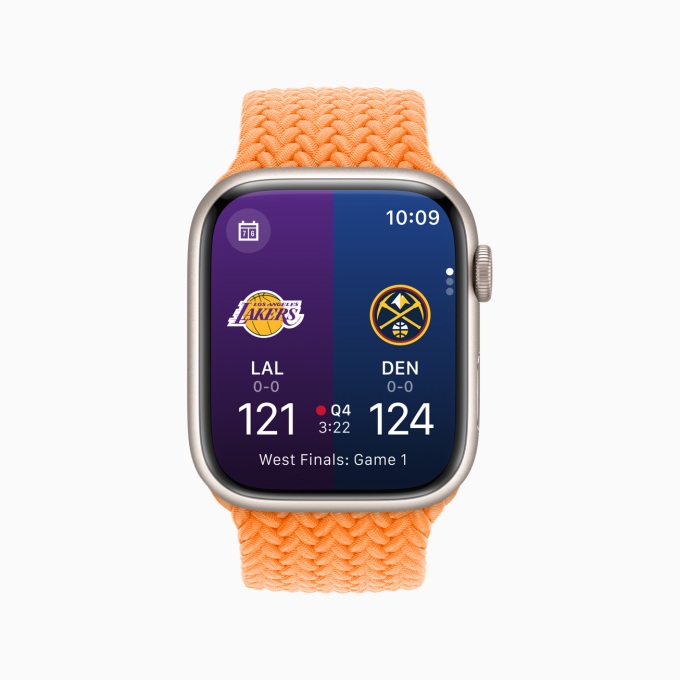
Apple revamps watchOS 10 with widgets, topographic maps, mindfulness features and more
Confirming earlier reports, Apple’s watchOS 10 for its Apple Watch is turning out to be a fairly notable upgrade. At the company’s Worldwide Developer Conference today, Apple previewed the coming improvements to its smartwatch operating system, which include an updated user interface with a renewed focus on widgets, plus refreshed first-party apps, like Compass, Mindfulness, Maps and more, plus other new features.
The user interface for Apple Watch hasn’t seen a sizable update in many years, despite the addition of new features and a larger Apple Watch screen size, with the debut of the Apple Watch Ultra. Meanwhile, Apple’s plan to translate its App Store success to its smallest screen has been on the decline. A number of top third-party apps have pulled out of the Apple Watch App Store in recent years, including Messenger, Slack, Uber, Twitter, Amazon, eBay, and others. Meta’s WhatsApp recently launched its first-ever smartwatch app on Google’s Wear OS instead, despite its smaller market share.
The app makers often said they realized they could reach their users through notifications on the Apple Watch and didn’t need to maintain a fully native app to do so.
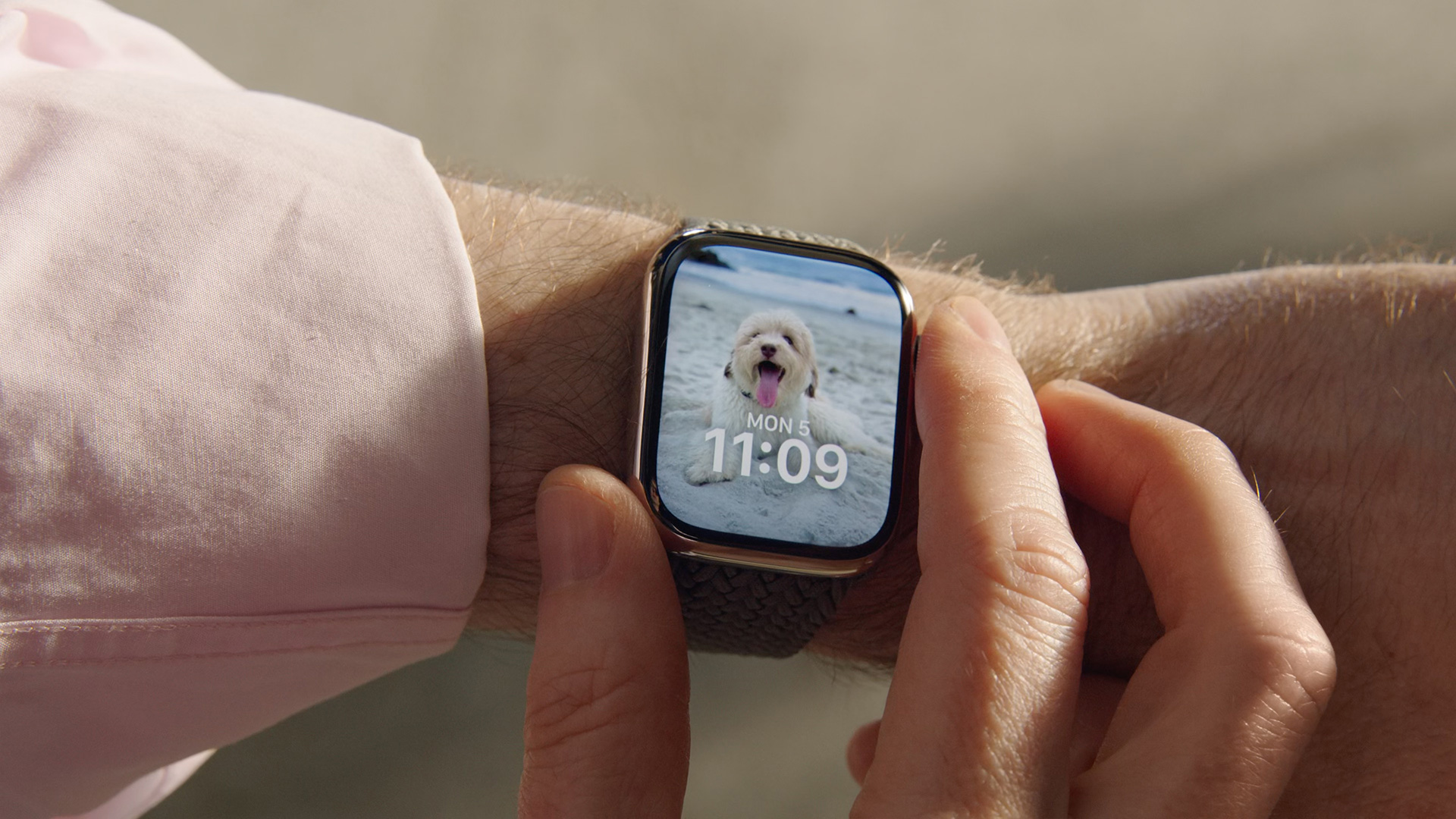
Image Credits: Apple
To address this shift, Apple is doubling down on the idea that launching apps doesn’t have to be the main way to deliver information and updates to Apple Watch wearers. With the introduction of new widgets in watchOS 10, users can instead preview updates in a familiar format.
While the first Apple Watch featured a widget system called Glances, it was removed in watchOS 3 as Apple pushed its native apps agenda. The new widgets are something of a combination of Glances and the widgets Apple introduced for iPhone with iOS 14. In watchOS 10, users will be able to scroll through various widgets for common activities, like viewing the weather or calendar appointments, activity tracking, checking stocks, and more.
To access the new watchOS 10 widgets, you can simply turn the Digital Crown. For instance, you could see widgets for the weather or meetings and appointments. These appear in a Smart Stack on the screen — a term Apple is using to explain the new interface that brings the widgets’ proactive and relevant information to the watch’s face.
Previously, pressing the Digital Crown on the side of the Apple Watch would take you to the homescreen, so this is a significant change to how you use your smartwatch.
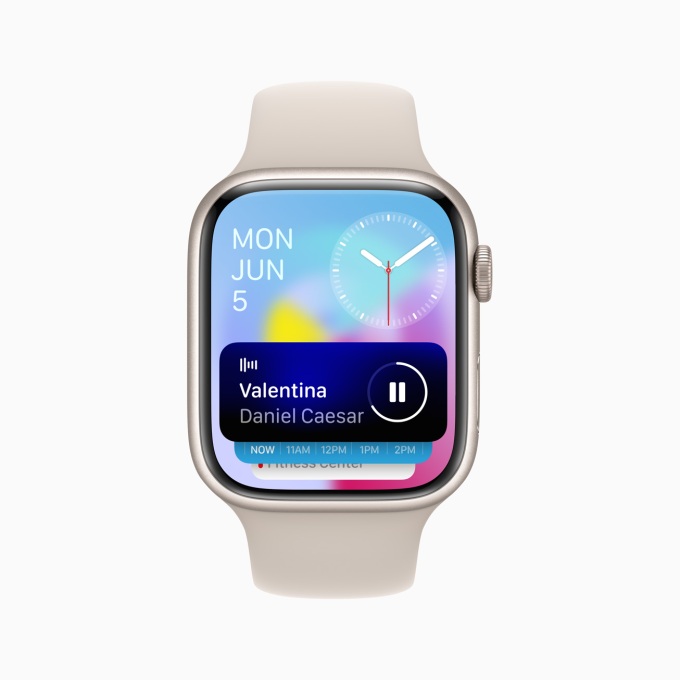
Image Credits: Apple
The machine learning will update the widgets throughout the day, as needed, allowing you to view the morning weather, see your boarding passes, track times to take your medications or view your sleep data, among other things. The Calendar app and Reminders will reshuffle to the top when meetings or tasks are coming up, while running apps, like Podcasts, will also move up so they are readily available, Apple explains.
The feature would allow users to take advantage of simple watch faces without complications to deliver information, as the data would be easily accessible with a turn of the Digital Crown.
Third-party apps will be able to use these widgets, too, and some early adopters include progress tracker Streaks, the NBA app, and Waterllama.
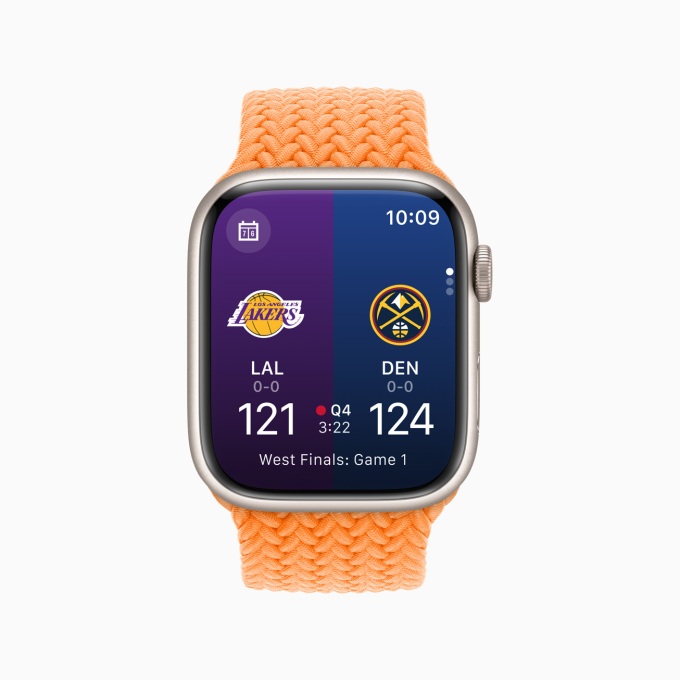
Meanwhile, a press on the side button will bring up the Control Center while a double-click on the Digital Crown will return you to any recently used apps.
In addition, Apple is refreshing its core smartwatch apps, including World Clock, with new background colors that reflect the time of day and the ability to easily see friends’ different time zones. The Activity app’s redesign includes corner icons you can tap to get to your weekly summary sharing or awards. There’s also a new trophy case, full-screen views when rotating the Digital Crown, and Apple Fitness+ trainer tips.
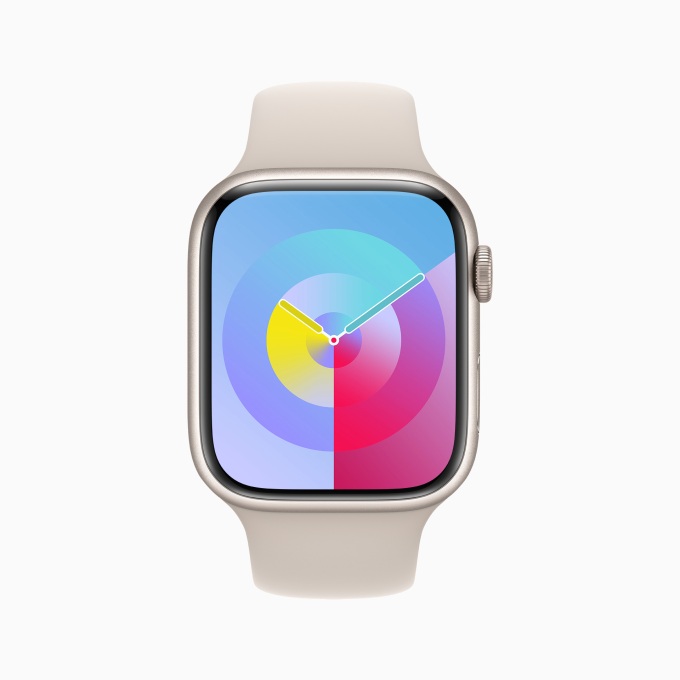
Image Credits: Apple
There are also a couple of new watch faces, including Snoopy and Woodstock and a new colorful Palette watch face, with overlapping layers of colors that shift as the time changes. On the Snoopy face, the characters interact and play with the watch hands, react to the weather conditions in the area, or even get active when the user does a workout, Apple says.
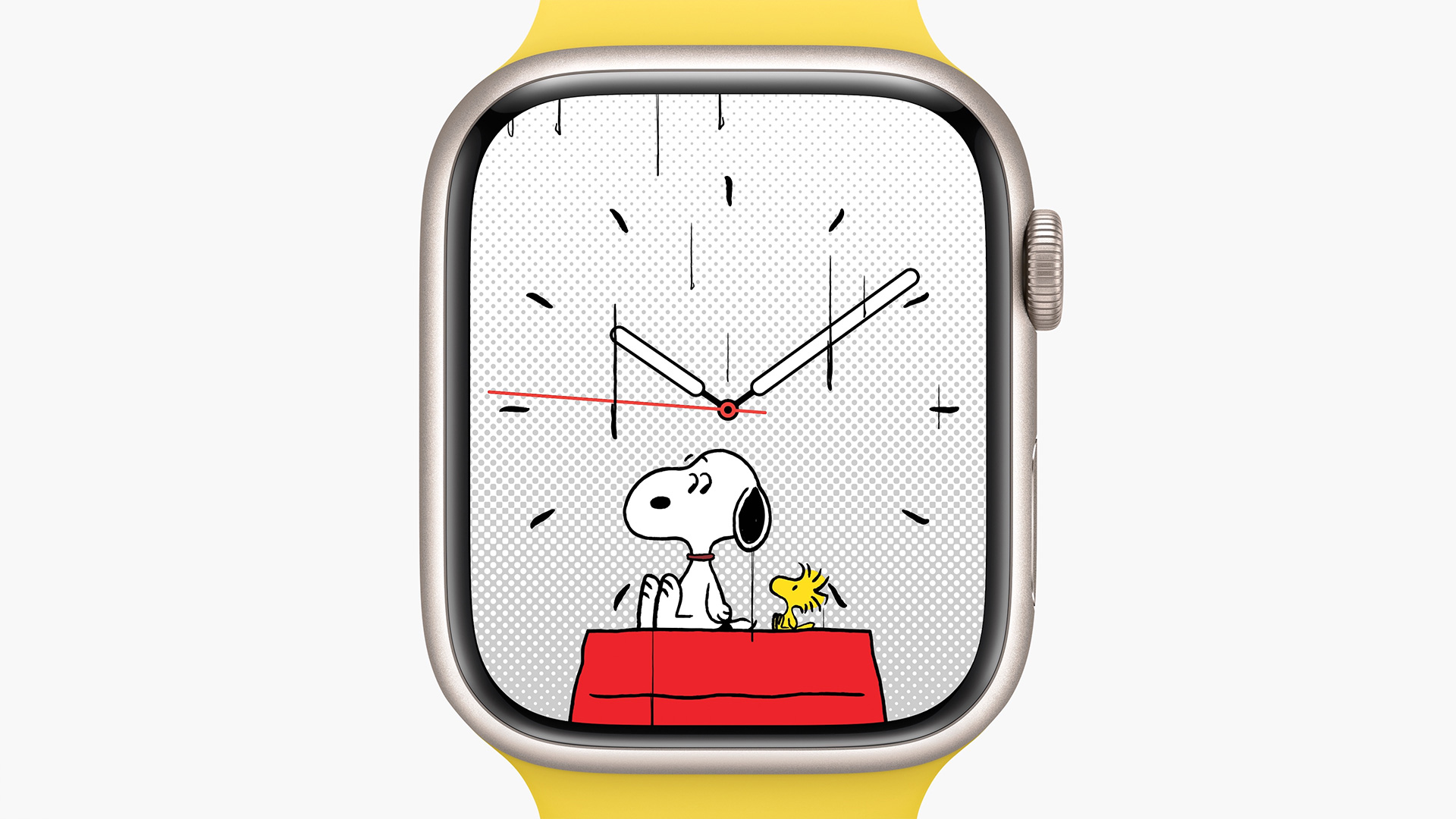
Image Credits: Apple
The Apple Watch gained a new Cycling workout feature, which will include a new workout view with new metrics, like”Power Zones,” support for Live Activities on the iPhone, and the ability to connect to Bluetooth-enabled bike sensors. When you tap on the Live Activity on the iPhone, it will utilize the full screen. Other Workout View have also been optimized for the iPhone display, including Heart Rate Zones, Elevation, Race Route, Custom Workouts and the new Cycling Speed view. This lets you easily see this data when the phone is mounted to a bike.
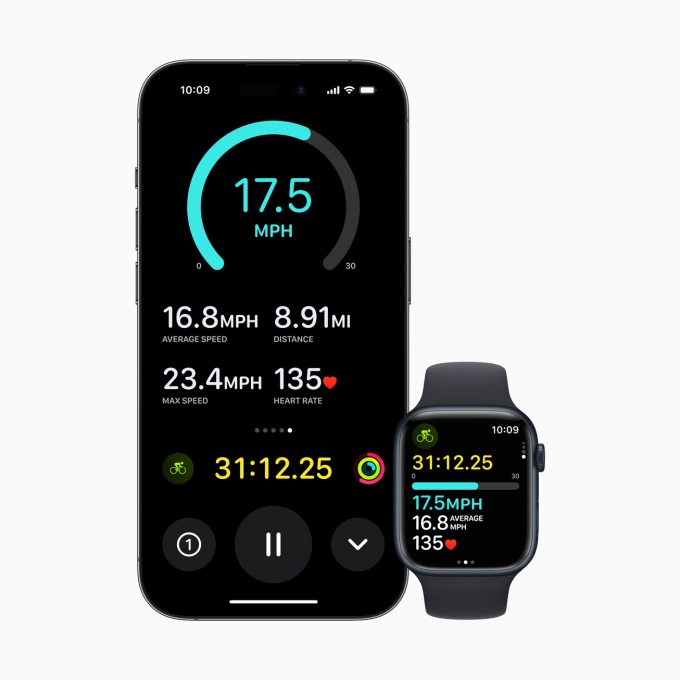
Image Credits: Apple
New algorithms that combine sensor data from Apple Watch and connected power meters on bikes can estimate Functional Threshold Power (FTP), or the highest level of cycling intensity that a rider could theoretically maintain for an hour. Using FTP, Apple Watch calculates personalized a metric it’s calling Power Zones. These are displayed to cyclists who want to track their performance.
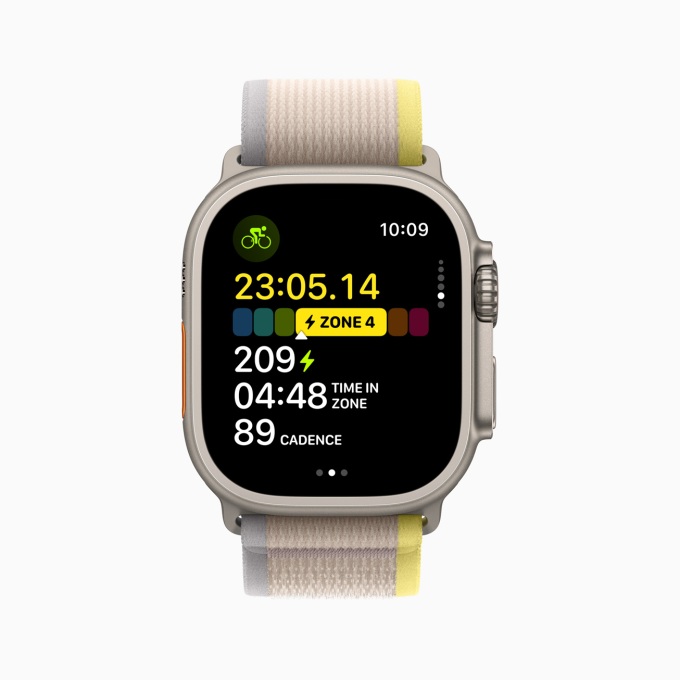
The Compass app will also now automatically generate two new waypoints — one that shows the last place you had a cell signal (Last Cellular Connection Waypoint) and another that shows where on your route you can make an emergency call (Last Emergency Call Waypoint).
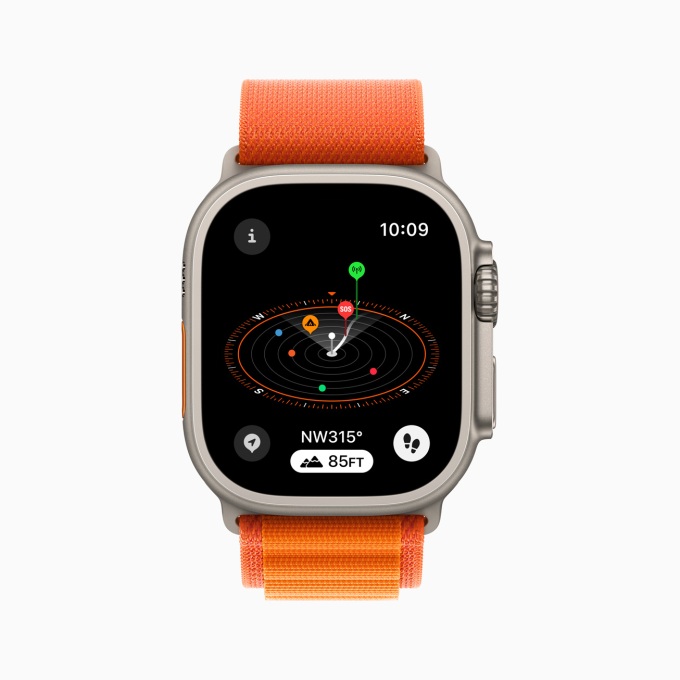
Image Credits: Apple
You’ll also have access to an Elevation view using altimeter data, where you can view your saved waypoints.
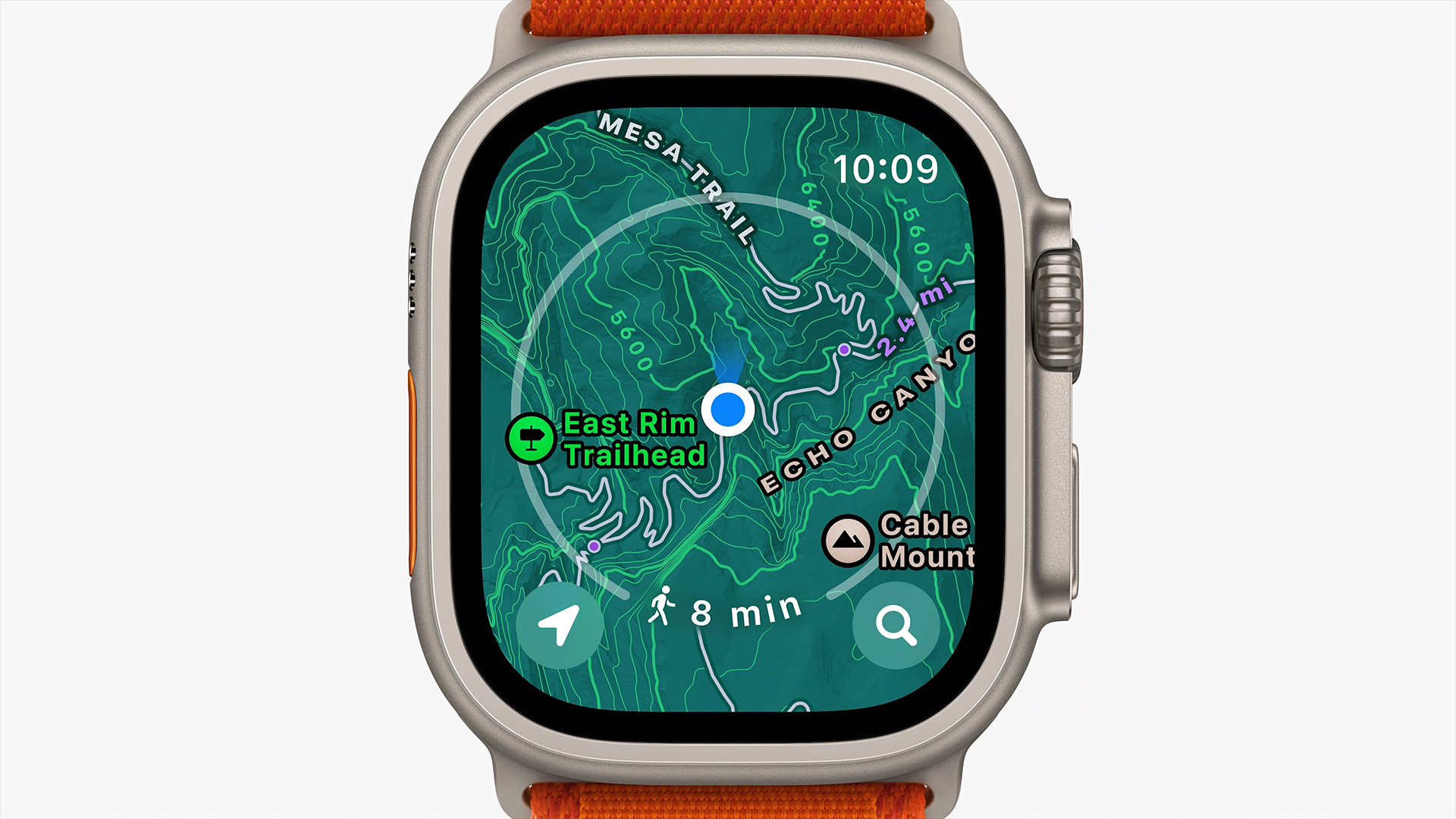
Image Credits: Apple
Apple Maps will gain new topographic maps with trailheads, contour lines, hill shading, elevation gains, and more, starting in the U.S. You’ll also be able to search to discover nearby trails and Trailhead categories so you can review additional information such as trail name, difficulty level length, elevation gain, and more before heading out to hike.
Various Apple Watch apps, including Weather, Stocks, Home, Maps, Messages, World Clock, and others, now utilize more of the Apple Watch display for more glanceable information, notes Apple.
Developers, meanwhile, will gain access to high-frequency motion data that will help them track things like swinging a golf club or a tennis racket in their own apps, with watchOS 10.
Another change involves a new feature for the Mindfulness app that lets you track your emotion and daily mood, even moving the Digital Crown to scroll through shapes to pick how you’re feeling. This “state of mind” info can then be tracked in the Health app on iOS 17 or iPadOS 17 alongside other health data.
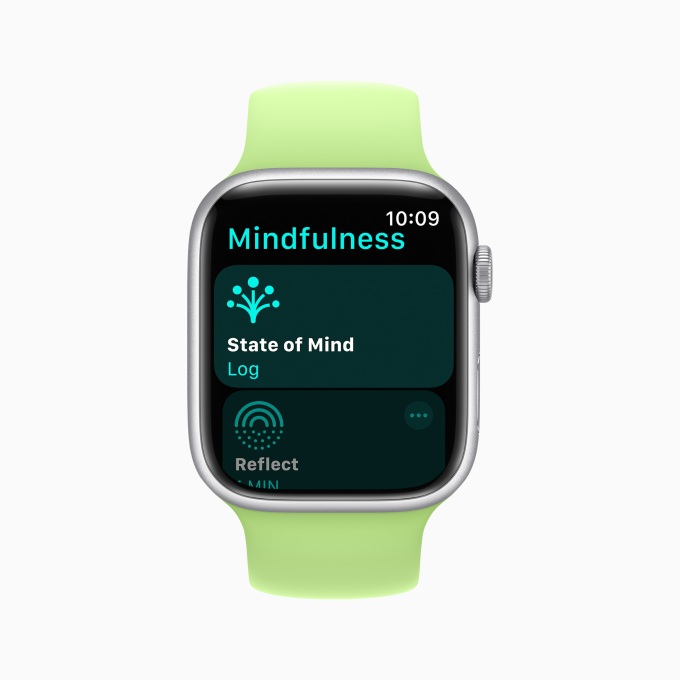
Image Credits: Apple
Meanwhile with Family Setup, time and daylight can be measured from a child’s Apple Watch, even if they don’t have their own iPhone, Apple says, and parents can track this info. A new field called Screen Distance will measure if a child is holding a device too close (closer than 12 inches) for an extended period of time and will then encourage them to move their device farther away. Screen Distance feature uses the same TrueDepth camera that powers Face ID in iPad and iPhone, notes Apple.
A few other changes to watchOS 10 include support for the AirDrop-based contact exchange feature, NameDrop; follow-up reminders in the Medications app, Custom plans in Apple Fitness+ based on days, duration, workout type and more; support for playing back the new FaceTime video messages; plus offline maps on iPhone can now provide navigation on paired Apple Watch.
Bloomberg had been trickling out news about watchOS 10 updates prior to the event, calling the revamp one of the most significant updates to the OS since the Apple Watch first debuted. That prediction appears to be true as the changes rolled out at today’s event, given the user interface makeover and app updates, which will impact how users interface with Apple’s popular wearable.

